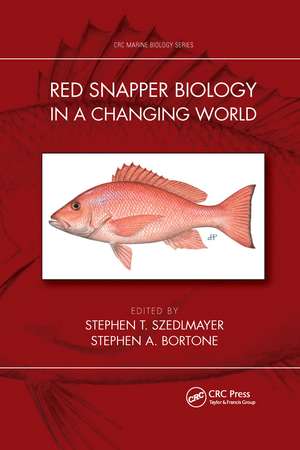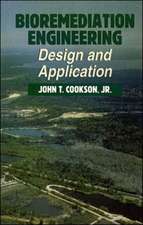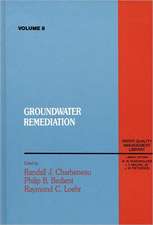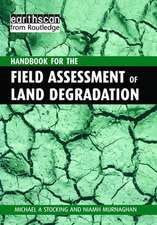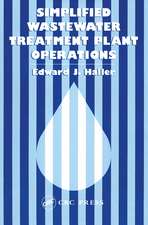Red Snapper Biology in a Changing World: CRC Marine Biology Series
Editat de Stephen T. Szedlmayer, Stephen A. Bortoneen Limba Engleză Paperback – 13 iun 2022
The book will provide a better understanding of Red Snapper population fluctuations that will subsequently allow for better management decisions and more informed user groups in their efforts to maintain a sustainable fishery. It explores the responses Red Snapper have made, and are making, relative to their life history attributes such as early life history and adult ecology, especially attributes associated with population distribution and abundance, movement patterns, fish health issues and management success.
A compendium of many papers presented at the 147th annual meeting of the American Fisheries Society in Tampa, Florida, this volume also includes additional research completed as a result of the symposium. It will be essential reading for fisheries scientists and managers, ichthyologists, resource and environmental managers, and policymakers who are involved with coastal fisheries.
| Toate formatele și edițiile | Preț | Express |
|---|---|---|
| Paperback (1) | 313.87 lei 6-8 săpt. | |
| CRC Press – 13 iun 2022 | 313.87 lei 6-8 săpt. | |
| Hardback (1) | 986.93 lei 6-8 săpt. | |
| CRC Press – 5 dec 2019 | 986.93 lei 6-8 săpt. |
Din seria CRC Marine Biology Series
- 9%
 Preț: 608.34 lei
Preț: 608.34 lei -
 Preț: 389.81 lei
Preț: 389.81 lei - 9%
 Preț: 785.47 lei
Preț: 785.47 lei - 8%
 Preț: 423.12 lei
Preț: 423.12 lei - 18%
 Preț: 1373.17 lei
Preț: 1373.17 lei - 18%
 Preț: 824.43 lei
Preț: 824.43 lei - 9%
 Preț: 700.55 lei
Preț: 700.55 lei -
 Preț: 442.89 lei
Preț: 442.89 lei - 15%
 Preț: 470.20 lei
Preț: 470.20 lei - 10%
 Preț: 327.14 lei
Preț: 327.14 lei - 24%
 Preț: 430.21 lei
Preț: 430.21 lei - 18%
 Preț: 1353.68 lei
Preț: 1353.68 lei - 18%
 Preț: 798.23 lei
Preț: 798.23 lei - 18%
 Preț: 1014.77 lei
Preț: 1014.77 lei - 18%
 Preț: 1556.55 lei
Preț: 1556.55 lei - 9%
 Preț: 1246.83 lei
Preț: 1246.83 lei - 29%
 Preț: 1019.22 lei
Preț: 1019.22 lei
Preț: 313.87 lei
Preț vechi: 364.91 lei
-14% Nou
Puncte Express: 471
Preț estimativ în valută:
60.08€ • 65.28$ • 50.50£
60.08€ • 65.28$ • 50.50£
Carte tipărită la comandă
Livrare economică 21 aprilie-05 mai
Preluare comenzi: 021 569.72.76
Specificații
ISBN-13: 9781032337531
ISBN-10: 1032337532
Pagini: 308
Ilustrații: 15 Illustrations, color; 58 Illustrations, black and white
Dimensiuni: 156 x 234 x 19 mm
Greutate: 0.52 kg
Ediția:1
Editura: CRC Press
Colecția CRC Press
Seria CRC Marine Biology Series
ISBN-10: 1032337532
Pagini: 308
Ilustrații: 15 Illustrations, color; 58 Illustrations, black and white
Dimensiuni: 156 x 234 x 19 mm
Greutate: 0.52 kg
Ediția:1
Editura: CRC Press
Colecția CRC Press
Seria CRC Marine Biology Series
Public țintă
Professional Practice & DevelopmentCuprins
Introduction. Red Snapper Lutjanus campechanus, Larval Dispersal in the Gulf of Mexico. Juvenile Red Snapper Lutjanus campechanus, Densities on Small Artificial Reefs to Estimate Year-Class Strength. A Review of Red Snapper Lutjanus campechanus, Acoustic Telemetry Studies. Fishing Mortality Estimates for Red Snapper Lutjanus campechanus, based on Acoustic Telemetry and Conventional Mark-Recapture. Polycyclic Aromatic Hydrocarbons in Red Snapper Lutjanus campechanus, and Sediment Samples after the Deepwater Horizon Oil Spill. The Effects of Modeled Dispersed and Undispersed Hypothetical Oil Spills on Red Snapper.Diet Analyses of Red Snapper Lutjanus campechanus, Based on DNA Barcoding from Artificial Reefs in the Northern Gulf of Mexico.Timing of Opaque Band Formation and Validation of Annular increments in Otoliths of Red Snapper Lutjanus campechanus. A Comparison of Age Determination between Whole and Sectioned Otoliths in Red Snapper Lutjanus campechanus. Improving the Historical Baseline of the Gulf of Mexico Red Snapper Lutjanus campechanus, Fishery. Management Strategies Influencing Recreational Red Snapper Lutjanus campechanus, Effort in the Gulf of Mexico: Why Can’t We Agree?. A Comparison of Two Fishery-Independent Surveys of Red Snapper Lutjanus campechanus, from 1999-2004 and 2011-2015. Artificial Reefs in the Future Management of Red Snapper Lutjanus campechanus
Notă biografică
Stephen T Szedlmayer, Ph.D., attended Millersville University, Lancaster, PA, for undergraduate studies. He then entered the University of South Florida and earned a Master’s degree in the Marine Science program under the supervision of Professor John C. Briggs. After graduating from USF he worked for a short period at Mote Marine Laboratory, Sarasota FL, before entering the graduate program at the Virginia Institute of Marine Science, College of William and Mary, Gloucester Point, VA. After completing his Ph.D., he accepted a post-doctoral position at the Rutgers University Marine Field Station, Tuckerton NJ, and collaborated with Professor Kenneth W. Able. He was then hired the School of Fisheries, Aquaculture and Aquatic Sciences, Auburn University, AL. While at Auburn he rose through the ranks to Professor, and mentored numerous graduate students on studies of various aspects of marine fish ecology.
Recently retired as Executive Director of the Gulf of Mexico Fishery Management Council, Stephen A. Bortone now is an Environmental Consultant with Osprey Aquatic Sciences, LLC based in Windham, New Hampshire (USA). As a consultant, he specializes in fisheries and is noted especially as an authority on artificial reefs. Currently, he is also Marine Biology Series Editor with CRC Press. Previously, Dr. Bortone served as Director of the Minnesota Sea Grant College Program with an appointment as Professor of Biology at the University of Minnesota Duluth. Earlier in his career he was the founding Director of the Marine Laboratory at the Sanibel-Captiva Conservation Foundation in Sanibel, Florida, Director of Environmental Science at the Conservancy of Southwest Florida, and Director of the Institute for Coastal and Estuarine Research while Professor of Biology at the University of West Florida
Recently retired as Executive Director of the Gulf of Mexico Fishery Management Council, Stephen A. Bortone now is an Environmental Consultant with Osprey Aquatic Sciences, LLC based in Windham, New Hampshire (USA). As a consultant, he specializes in fisheries and is noted especially as an authority on artificial reefs. Currently, he is also Marine Biology Series Editor with CRC Press. Previously, Dr. Bortone served as Director of the Minnesota Sea Grant College Program with an appointment as Professor of Biology at the University of Minnesota Duluth. Earlier in his career he was the founding Director of the Marine Laboratory at the Sanibel-Captiva Conservation Foundation in Sanibel, Florida, Director of Environmental Science at the Conservancy of Southwest Florida, and Director of the Institute for Coastal and Estuarine Research while Professor of Biology at the University of West Florida
Descriere
The book will provide a better understanding of Red Snapper population fluctuations that will subsequently allow for better management decisions and more informed user groups in their efforts to maintain a sustainable fishery. It explores the responses Red Snapper have made, and are making, relative to their life history attributes.
